A Fever in the Heart and Other True Cases Read online
FEVER IN THE HEART
Copyright: 1996, 2013 by Ann Rule
This edition published in 2013 by:
Planet Ann Rule, LLC
http://www.PlanetAnnRule.com
Seattle, WA
Kindle Edition ISBN 978-1-940018-00-3
Cover Art by Leslie Rule
The names of some individuals in this book have been changed. Such names are indicated by an asterisk (*) the first time each appears in the book.
DEDICATION
For my friend, Olive Morgan Blankenbaker, born 1910, and for my mother, Sophie Hansen Stackhouse, 1906-1995, two brave women who lost their only sons much too soon. They taught me how to survive tragedy and loss and how to grow old with grace and dignity.
TABLE OF CONTENTS
Author’s Note
Fever in the Heart
Chapter One
Chapter Two
Chapter Three
Chapter Four
Chapter Five
Chapter Six
Chapter Seven
Chapter Eight
Chapter Nine
Chapter Ten
Chapter Eleven
Chapter Twelve
Chapter Thirteen
Chapter Fourteen
Chapter Fifteen
Chapter Sixteen
Chapter Seventeen
Chapter Eighteen
Chapter Nineteen
Chapter Twenty
Chapter Twenty-One
Chapter Twenty-Two
Chapter Twenty-Three
Chapter Twenty-Four
Chapter Twenty-Five
Chapter Twenty-Six
Chapter Twenty-Seven
Chapter Twenty-Eight
Chapter Twenty-Nine
Afterword
The Highway Accident
Murder Without a Body
I’ll Love You Forever
Black Leather
Mirror Images
Acknowledgments
AUTHOR’S NOTE
It has been said that there are no new stories under the sun. Even those dramas and tragedies that are true are only a reprise of something that has happened before. I suspect that is an accurate analysis.
In this third volume of my true crime files, I note that I have either subconsciously or inadvertently chosen four cases that share a common theme: personal betrayal. Since I am a great believer in the premise that we do nothing accidentally, it must be the right time to contemplate homicides that occur because the victim- or victims- have been betrayed by someone they have come to trust. In most of the following cases, the victims have believed in their killers over a long time; in one case, the victims have put their faith too quickly in the wrong men. There is something especially heartbreaking about love and friendships betrayed. The thought that some of the victims in this book must have recognized that betrayal at the very last moments of their lives may be difficult to cope with.
In the final two cases, the system trusted a criminal’s rehabilitation-and innocent people paid for this mistake.
All serve to remind us that things are seldom what they seem. And to be wary.
The title case in A Fever in the Heart occurred very early in my career as a true crime writer, so early, in fact, that I felt I had neither the courage nor the technical skill to undertake a book. To be truthful, I admit that I was afraid to attempt a book; I could not even imagine myself turning out three or four hundred pages.
Even so, I attended the entire trial that resulted from an intensive police investigation in Yakima, Washington. Because of a change in venue, the trial took place during one uncharacteristically hot summer in Seattle. I was there in the courtroom every day, utterly fascinated by the havoc wrought by one man’s “love” for a beautiful woman. But this was not the kind of tender, romantic love we usually think of. This was obsessive love, a consuming passion that ate at a theretofore well-adjusted man as surely as acid eats into metal, until all the values he had believed in eroded.
I saw all the “characters” in this modern-day classic tragedy in person, and became friends with some of them. This was not simply a case of multiple murder; it involved the bonding and later disintegration of many families. Anyone who wrote about it would have to go back decades to even begin to explain the extent of the loss. I knew that the story needed to be told, and close family members asked me to delve deeper, but after some agonizing debates with myself, I let it pass. I didn’t think I could do it justice.
It would be years before I undertook my first book, The Stranger Beside Me. After my view of the Ted Bundy story was published, I wrote a dozen more books but I kept coming back to A Fever in the Heart. During all that time, I kept my notes, the pictures my daughter took in the courtroom, and those given to me by relatives of the victims. I think I knew that someday I would write the whole story, because I moved all the paraphernalia of A Fever in the Heart with me every time I changed residences.
Two decades later, I still find this chillingly ironic story of murder in Yakima, Washington, full of the most compelling series of circumstances I have ever encountered. Everyone involved was a winner—intelligent, physically attractive, charismatic, athletically gifted, and surrounded by love.
What on earth went wrong? It will take a whole book to try to sort it out, and I am finally ready to do that.
In addition to A Fever in the Heart, you will find five other cases that I have never forgotten: Mirror Image, Black Leather, I’ll Love You Forever, Murder Without a Body, and The Highway Accident.
I hope you enjoy them all!
Ann Rule, Seattle, 1996
***
FEVER IN THE HEART
The holiday season can be something of a letdown even if the celebrations are successful and families manage to get together without allowing half-forgotten slights and old wounds to bubble to the surface. In New York City and in Yakima, Washington, and in every city and hamlet in between, families who coexist all year tend to become dysfunctional with the pressure of holiday emotions. Perhaps humans expect more out of life during the festive season. Those over the age of ten are usually disappointed.
CHAPTER ONE
In 1975 the Friday before Thanksgiving was icy and bleak. In the spring, Yakima, and all of Yakima County, is scented by what seems like a continuous froth of apple and peach blossoms from a thousand orchards; in the summer, it is rich with growing things, and in the autumn, the tree branches are pregnant with fruit. However, in the last dark week of November 1975, Yakima was bitterly cold with lowering clouds that promised snow all day but never quite delivered by the time night fell.
Saturday would mark the twelfth anniversary of one of America’s most stunning catastrophes. November 22, 1963. The day President John F. Kennedy was assassinated in Dallas while he was at the peak of his powers, dead—shot to the brain before he had time to sense the presence of danger. The date was the first in a series of grim similarities, albeit on a smaller stage.
Even though newly hung Christmas decorations were up on the light poles, it was hard to feel festive in Yakima. On that night of November 21,1975, the sun set far too soon. For those people whose memories made their hearts heavy with sorrow and loss, there was the usual sense of apprehension about two major holidays ahead to live through. Thanksgiving first—and Christmas would arrive hard on its heels.
It was so cold.
***
Gerda Lenberg lived in a duplex at 506 East Lincoln in Yakima. Many streets in town were named after numbers or letters or names of presidents, and most of them had alleys that ran behind backyards, slicing the blocks in two, and allowing residents to park off the main streets. Gerda always described whe
re she lived precisely: “On the right-hand side on the corner of Sixth and Lincoln-or off Lincoln and the alley.”
The latter was more accurate. Gerda lived in a semi-basement level apartment; her bedroom window was set in a well, and located smack-dab on the alley.
Most evenings, Gerda sipped a bourbon and water, ate dinner, and then watched television until ten when she went to bed. She followed her pattern that dark Friday night of November 21, 1975. She turned out her lights, and then raised the bedroom window to get some fresh air. She wasn’t afraid of burglars; it was a good neighborhood with lots of apartments, private homes, and churches nearby. In the daytime, there were dozens of older people who walked south down the alley to church activities.
Gerda could never be absolutely sure of the order of events that happened later that night. Either she woke up from a disturbing dream in the middle of the night or something she heard outside awakened her. She lay there trying to decide whether to get up. Later, she was fairly certain that she was already wide-awake when she heard footsteps running in the alley. “And I thought,” she said, “well, that’s kind of odd this time of night, because it was so quiet so I knew it was past midnight. And then it sounded like somebody bumped a garbage can or something … kind of a ‘metal’ sound.”
Gerda Lenberg lay there, not disoriented but curious and a little apprehensive, as she heard “firecrackers” popping beyond her window. “It was three or four, like you light them right in succession.”
It might have been a few minutes or a little longer before she heard running footsteps again, this time heading in the opposite direction—north—and coming from a short distance away, thudding directly above her window, and then fading. She was positive the person was running. She was used to hearing the faltering steps of elderly people walking through the alley to church. This was nothing like that. “It was kind of a hollow sound like they might have had heavy soles or clogs,” she remembered.
That wouldn’t mean much later in helping to identify the person running. In the mid-seventies, practically everyone under thirty wore shoes with improbably built-up soles and Cuban heels—just as they wore polyester leisure suits with stitching on the lapels, plaid sports coats, bell-bottom pants, and “poor boy” sweaters.
Gerda Lenberg didn’t believe she had heard anything that unusual or frightening. Only firecrackers and someone running in the chilly night. She glanced instinctively at the clock on the wall next to her bed. It was a decorative clock with Roman numerals, fancy rather than functional. She was never really sure exactly what time it was, but she could see it was somewhere between five or ten minutes after two in the morning. She turned over and was asleep in a short time.
“The next morning,” Gerda recalled, “I remarked they were sure starting the Fourth of July early because somebody was shooting off firecrackers.”
Dale Soost lived several buildings down the alley from Gerda’s duplex. They had never met; he didn’t know many people in the neighborhood of his apartment house at 208 North Sixth. He was employed by the State of Washington as a systems analysis programmer and was working on a project to automate the Superior Courts in the state. This phase of his contract had brought him to Yakima County.
Soost retired about midnight that Friday before Thanksgiving. He knew he wasn’t going to get much sleep because he had to be up at four to go deer hunting. As it was, he got even less sleep than he expected; he was awakened suddenly in the hours before dawn by the sound of shots. As a hunter he was familiar with both rifles and pistols and he knew a gunshot when he heard one. “It was one shot,” he would say later. “One shot, followed by two in rapid succession … bang … bang-bang.”
Soost looked out his window to see if he could see anything. The shots sounded as if they had come from the other end of his apartment house. His unit was in the alley, and the noise seemed to have come more from the street side. He thought they had been fired closer to Sixth Street. It was long before the era of “drive-by shootings,” and Soost wasn’t particularly concerned. He put it down to somebody shooting in the air.
He crawled back into bed and caught another few hours of sleep. By five A.M., Soost was on the sidewalk in front of the brick-facade apartment house where he lived, dressed in hunting gear, and waiting for his companions to pick him up. It was still that impenetrable black of a winter’s predawn and he jumped a little when a man walked toward him on the sidewalk. Then he saw it was another resident of his apartment complex, a man he often nodded to, but who he didn’t really know. It turned out that the man, Rowland Seal, was going hunting too-duck hunting. He was also waiting for his ride.
Seal was a body and fender mechanic by trade, but his avocations kept him so busy he didn’t normally have time to chat with his neighbors. He was filled up every hour of every day, and although he recognized people who lived in his apartment house and knew where most of them worked, Seal didn’t socialize, considering idle conversation a waste of valuable time.
While they looked up Sixth Street for approaching headlights and paced back and forth to keep warm, Rowland Seal and Dale Soost made small talk about the noises they’d both heard in the night. Seal said he too had been awakened by the sound of shots. He was a most precise man and he knew the exact time. His digital watch and the digital clock next to his bed had both read 2:05 A.M.
Eventually they agreed that while it was true they lived in town, Yakima wasn’t that big, and it was hunting season. Somebody must have gotten a little anxious to get started. There were a lot of would-be Nimrods out there.
Since it was so early and so cold, both men immediately noticed the woman who emerged from the big frame house next to the apartment house. At first, they figured she was coming out in her robe to get the morning Yakima Herald Republic. But she crossed the frosty porch and then walked slowly down the front steps and onto the lawn dusted half white from a desultory snowfall. Almost as if she were walking in her sleep, she disappeared around the side yard toward the alley.
Suddenly, the silent icy air was shattered by screams. The woman was calling out the name of the man Rowland Seal knew she lived with. “Morris! Morris!” she cried over and over.
Soost and Seal were caught off-guard. For a long moment, they stared at each other. A few seconds later, the young woman ran back into view and disappeared into her house.
Seal murmured, “Morris’s dog must have got shot last night.”
Soost didn’t know the neighbors, but he figured Morris was the woman’s husband or maybe her boyfriend. If someone had shot his dog, he was going to be upset. The woman had certainly seemed shaken. While the two hunters stood awkwardly, hesitant about what they should do, the woman next door ran out of her house again. She was still screaming and she seemed on the verge of complete hysteria, “Oh, my God! He’s dead. Oh, my God!”
Rowland Seal was the kind of man who stepped up when he saw an emergency, and he was sure he was seeing one now. While Dale Soost hung back, Seal hurried over to her and said, “We’ll call an ambulance.” It seemed the right thing to say, but he didn’t even know if you could call an ambulance for a dog.
The woman didn’t seem to understand what he was saying to her. Seal had no choice but to bring her back to reality with firm words. “I wasn’t too gentle or too courteous,” he recalled, “but I said, ‘Get in there and call an ambulance,’ and so she did.”
While the young woman was in the house, Rowland Seal walked along the side of the thin wire fence separating the apartment house property from the lawn next door. The fence was more of a psychological barrier than a physical one, not much more than chicken wire. Seal felt the hairs prickle at the back of his neck. It was still dark but he could see that it was not a dog at all-but a man-who lay on his back in an open gate between the area where the people next door parked their cars and the side yard of their house. The man lay in the shadows and it was so dark near the gate that at first Seal could see only a white shirt and a white face. But there was more. He could make
out scarlet stains—blood? —on the man’s face. He couldn’t be sure who it was, but it was a big man. That and the blood were all he could see for certain. Peering from his side of the fence, Seal was unable to get any closer than five or six feet from the body.
He forced himself to conquer his shock and headed back to the sidewalk. The young woman had emerged from her house again and this time two small children and a large dog trailed after her.
Leaving the children and dog on the porch, she ran back to the body crying, “Oh, my God, he’s dead. He’s been shot. My God. He’s shot. He’s dead …”
Rowland Seal saw that the woman was getting more and more frantic, and he didn’t want the kids to catch her hysteria. He instructed her very carefully to take the children into the house and to call the police.
For a moment the scene on the porch seemed eternal, a frozen tableau, until the slender, dark-haired woman turned and headed into the house. “And then,” Seal remembered, “a police officer came and then another one and then another one. When the third one came, I thought everything was under control, and I gave my name and address and told him I was going duck hunting and he could find me at my address.”
Rowland Seal was nothing if not pragmatic; he went ahead with the day he had planned. He could do nothing to help the man who lay in the snow. Nor could he help the woman. The police would take care of it.
A shaken Dale Soost went ahead with his day too.
And so did Gerda Lenberg. She had no idea at all that anything earthshaking had occurred in the dark hours between Friday night and Saturday morning. It wasn’t until Sunday morning when she read the paper that she looked up and said slowly, “Oh, my lord, that wasn’t firecrackers at all …”
CHAPTER TWO
It never should have ended the way it did. There are some people whom destiny smiles upon, human beings blessed with wonderfully classic good looks, intelligence, and talents and skills that far surpass the average-people who grow up surrounded by love and high hopes. In Yakima, Washington, in that window of time in the 1970s, there were four people like that, an oddly assembled quartet of players whose lives would grow so intertwined and hopelessly entangled that they could never seem to pull apart. The very “oxygen” of their freedom to live and breathe was soon compromised by their closeness. The obsessive desire of one player damned the happiness of the other three forever.

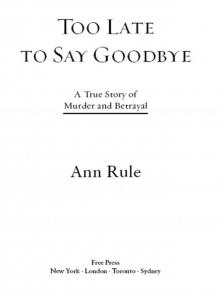 Too Late to Say Goodbye: A True Story of Murder and Betrayal
Too Late to Say Goodbye: A True Story of Murder and Betrayal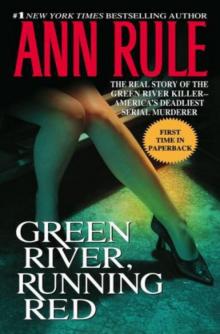 Green River, Running Red
Green River, Running Red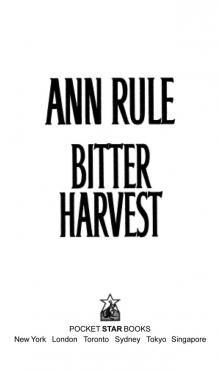 Bitter Harvest
Bitter Harvest Dead by Sunset: Perfect Husband, Perfect Killer?
Dead by Sunset: Perfect Husband, Perfect Killer?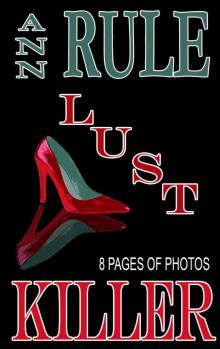 Lust Killer
Lust Killer And Never Let Her Go: Thomas Capano: The Deadly Seducer
And Never Let Her Go: Thomas Capano: The Deadly Seducer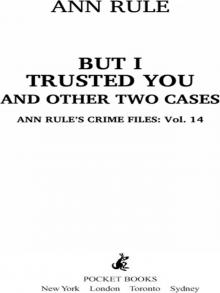 But I Trusted You and Other True Cases
But I Trusted You and Other True Cases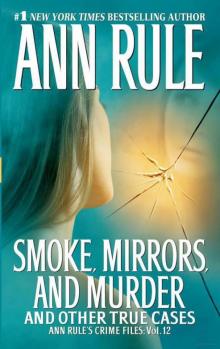 Smoke, Mirrors, and Murder and Other True Cases
Smoke, Mirrors, and Murder and Other True Cases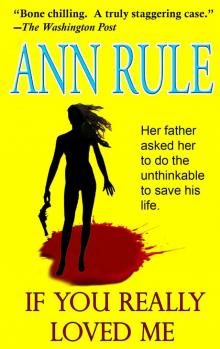 If You Really Loved Me
If You Really Loved Me Kiss Me, Kill Me and Other True Cases
Kiss Me, Kill Me and Other True Cases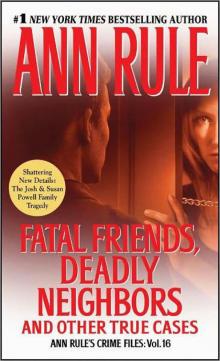 Fatal Friends, Deadly Neighbors and Other True Cases
Fatal Friends, Deadly Neighbors and Other True Cases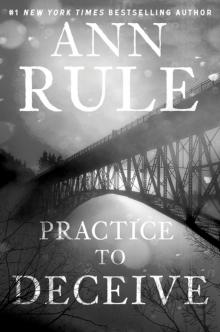 Practice to Deceive
Practice to Deceive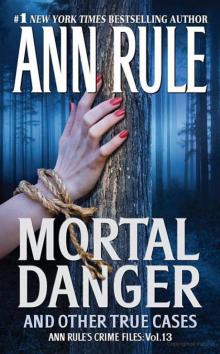 Mortal Danger and Other True Cases
Mortal Danger and Other True Cases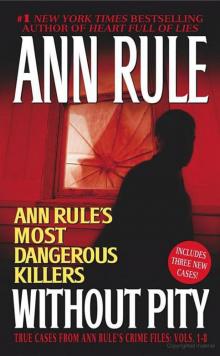 Without Pity: Ann Rule's Most Dangerous Killers
Without Pity: Ann Rule's Most Dangerous Killers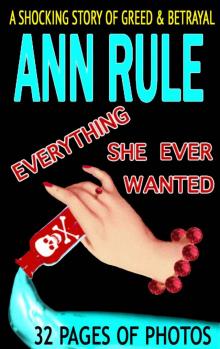 Everything She Ever Wanted
Everything She Ever Wanted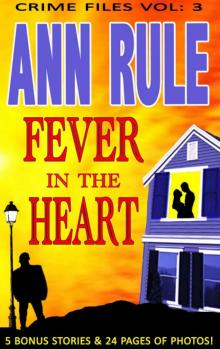 A Fever in the Heart and Other True Cases
A Fever in the Heart and Other True Cases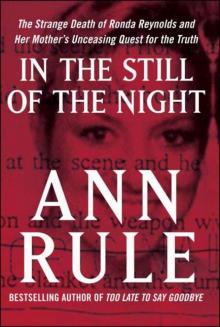 In the Still of the Night
In the Still of the Night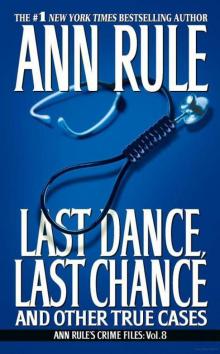 LAST DANCE, LAST CHANCE - and Other True Cases
LAST DANCE, LAST CHANCE - and Other True Cases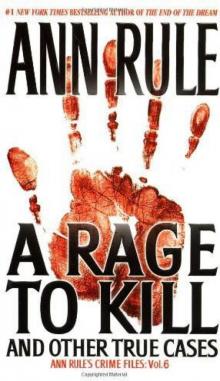 A Rage to Kill
A Rage to Kill The I-5 Killer
The I-5 Killer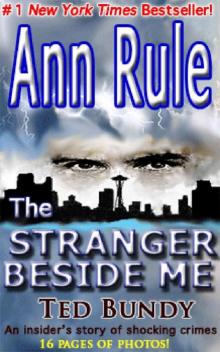 The Stranger Beside Me
The Stranger Beside Me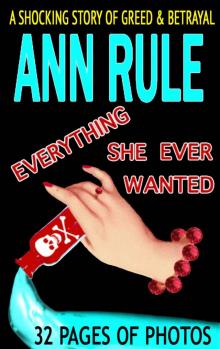 Everything She Ever Wanted: A True Story of Obsessive Love, Murder, and Betrayal
Everything She Ever Wanted: A True Story of Obsessive Love, Murder, and Betrayal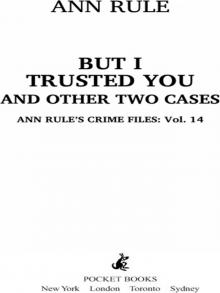 But I Trusted You
But I Trusted You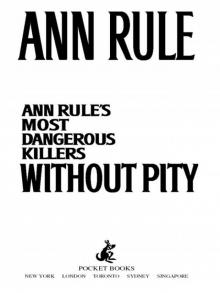 Without Pity
Without Pity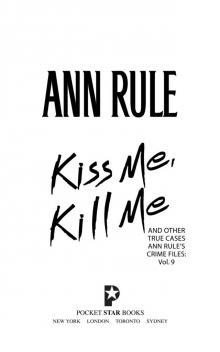 Kiss Me, Kill Me
Kiss Me, Kill Me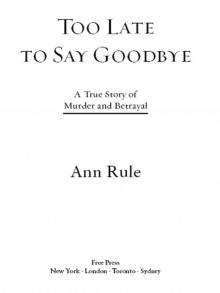 Too Late to Say Goodbye
Too Late to Say Goodbye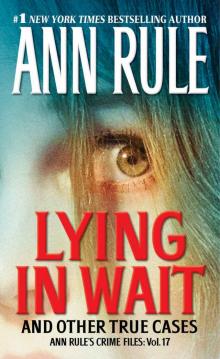 Lying in Wait
Lying in Wait Fatal Friends, Deadly Neighbors
Fatal Friends, Deadly Neighbors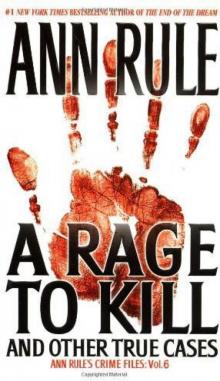 A Rage to Kill: And Other True Cases
A Rage to Kill: And Other True Cases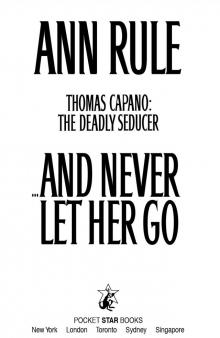 And Never Let Her Go
And Never Let Her Go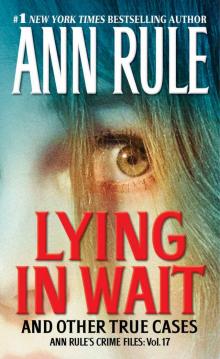 Lying in Wait Ann Rule's Crime Files Vol.17
Lying in Wait Ann Rule's Crime Files Vol.17 Blood Secrets: Chronicles of a Crime Scene Reconstructionist
Blood Secrets: Chronicles of a Crime Scene Reconstructionist No Regrets
No Regrets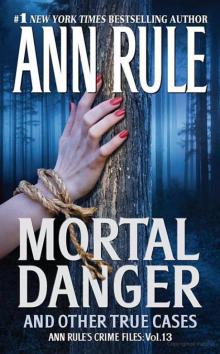 Mortal Danger
Mortal Danger But I Trusted You: Ann Rule's Crime Files #14
But I Trusted You: Ann Rule's Crime Files #14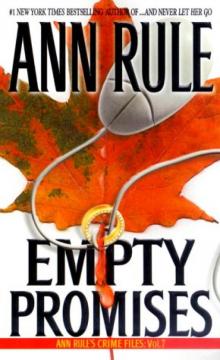 Empty Promises
Empty Promises Dead by Sunset
Dead by Sunset Last Dance, Last Chance
Last Dance, Last Chance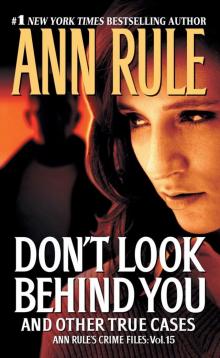 Don't Look Behind You
Don't Look Behind You